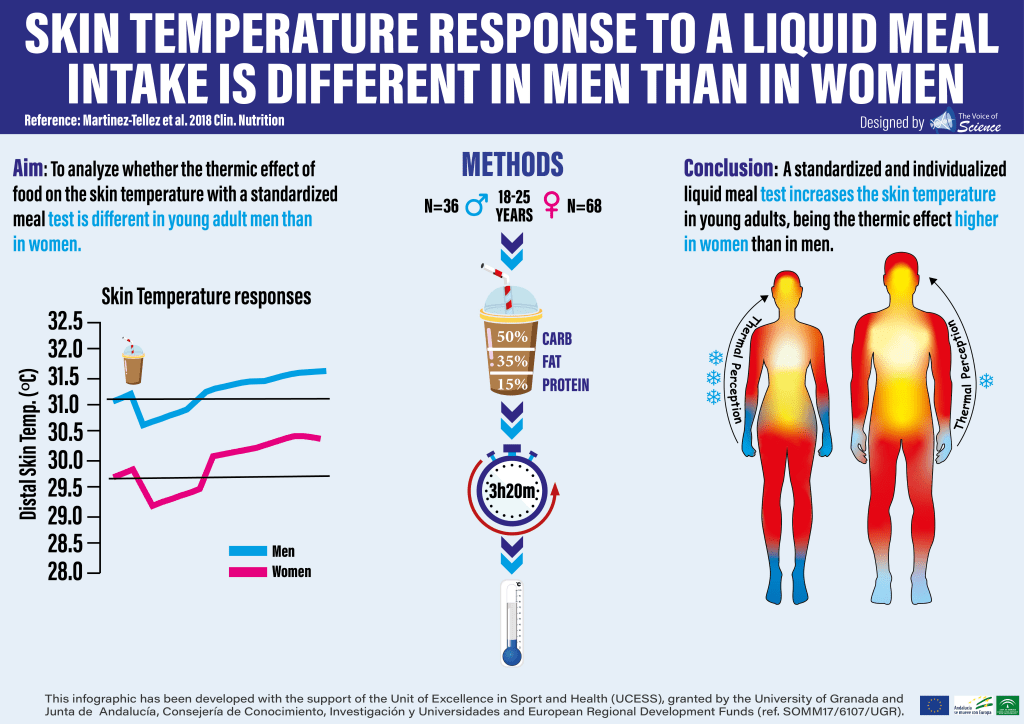Women are able to dissipate higher amounts of heat via the skin in comparison to men
The thermic effect of food (TEF) refers to the increase of the metabolic rate and body temperature in response to a single meal. To date, most of the studies have focused on determiníng the TEF in terms of energy expenditure, but little is known about which is the response in terms of skin temperature. The aim of this study was to analyze whether the thermic effect of food (TEF) on the skin temperature with a standardized and individualized liquid meal test is different in young adult men than in young adult women. A total of 104 young adults (36 men and 68 women, age: 18 to 25 years old) consumed a standardized and individualized liquid meal (energy intake: 50% of measured basal metabolic rate, 50% carbohydrates, 35% fat, 15% protein). The skin temperature was measured by means of 17 iButtons during 3h and 20 min. The mean, proximal, distal, and supraclavicular skin temperature, as well as the peripheral gradient, were determined as a proxy of a peripheral vasoconstriction. The participants reported the thermal sensation of the whole body, clavicular, feet, and hands zones. The body composition was measured by dual X-ray absorptiometry.
The overall, mean, proximal, and supraclavicular skin temperature significantly increased after the meal intake. There was a postprandial peripheral vasoconstriction right after the meal intake and over the first hour and a peripheral vasodilatation during the second and third hour. Women had a higher increase in all skin temperature parameters in comparison to men, whereas there were no sex differences in the proximal skin temperature. The pattern of thermal sensation was similar between sexes, but women always felt colder than men. All of the results persisted after adjusting the analyses for body composition or menstrual cycle.
Therefore, a standardized and individualized liquid meal test increases the skin temperature in young adults, being the thermic effect higher in women than in men.
This paper is signed by the researchers Borja Martinez-Tellez, Lourdes Ortiz-Alvarez, Guillermo Sanchez-Delgado, Huiwen Xu, Francisco M. Acosta, Elisa Merchan-Ramirez, Victoria Muñoz-Hernandez, Wendy Martinez-Avila, Miguel Contreras-Gomez, Angel Gil & Jonatan Ruiz of the University of Granada. With the collaboration of Iodia Labayen, researcher of the Public University of Navarra.




